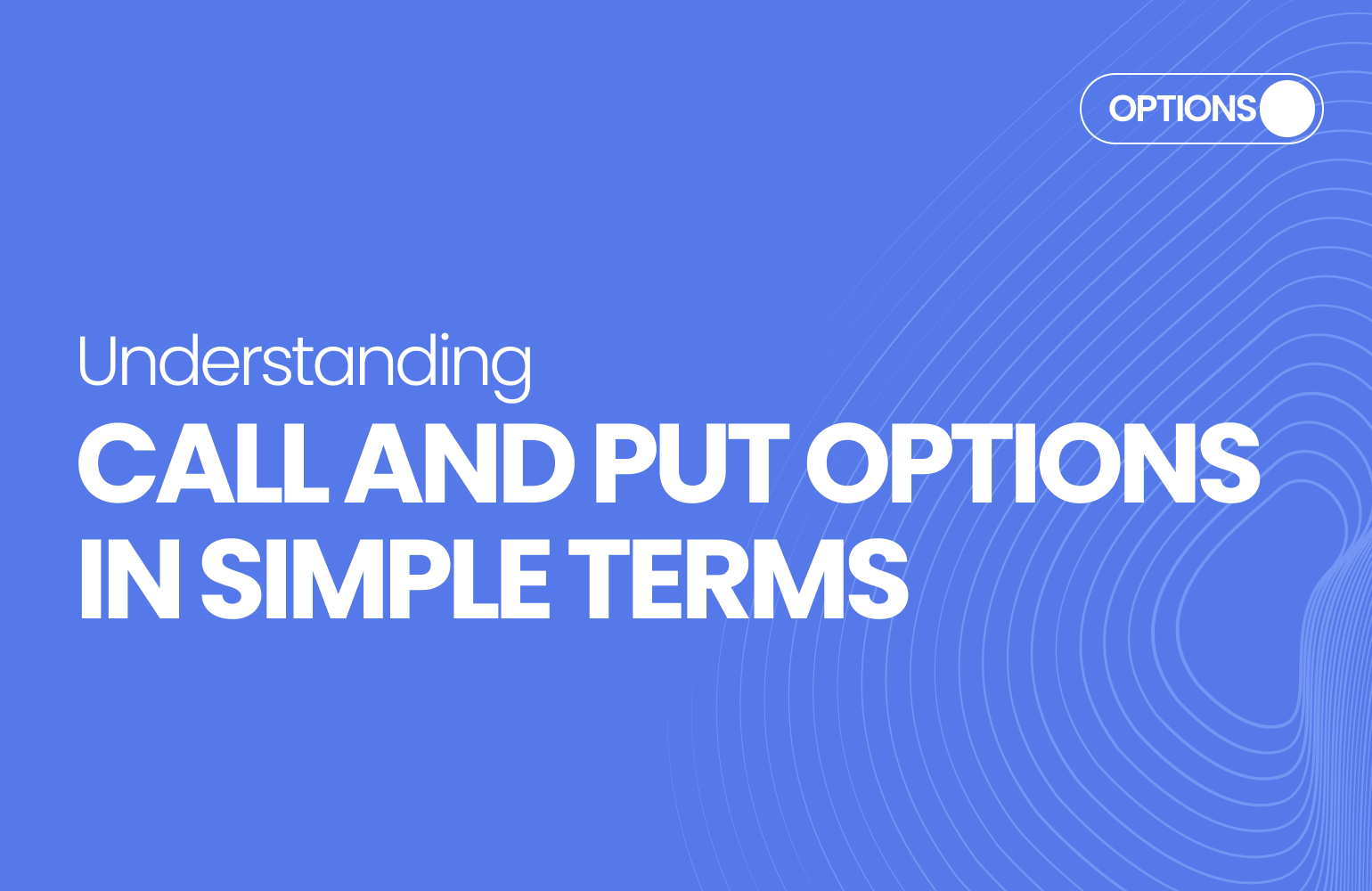Key Takeaways:
- Call option and put option = core strategies for bullish and bearish trades
- Calls = Right to buy; Puts = Right to sell
- Difference between call option and put option lies in market direction—up or down
- Risk is limited to the premium paid, while profit potential can be significant
What Are Call and Put Options in Crypto?
Confused by what are puts and calls? You’re not alone. But understanding these two simple tools can unlock powerful strategies in the world of crypto trading.
Whether you’re looking to amplify profits, protect against downturns, or trade volatility, knowing what is call options and what is put options in crypto is essential. In this guide, we break it down in plain English—no jargon, just actionable insights.If you’re trading crypto or planning to start, this is your must-know primer on call option and put option in crypto.
What Are Options Contracts?
Options are financial contracts that give you the right, but not the obligation, to buy or sell an asset at a specific price before a certain date.
These contracts come in two types:
- Call Options: The right to buy an asset
- Put Options: The right to sell an asset
These tools are commonly used in stock, forex, and now, increasingly in crypto options trading. Understanding the difference between call option and put option in crypto is key before you apply them.
The Key Difference Between Calls and Puts
- Call Option = You expect the price to go up
- Put Option = You expect the price to go down
These can be used for speculation, hedging, or generating income. In short, puts and calls explained in crypto comes down to whether you’re betting on price rising or falling.
How Call Options Work?
A call option and put option in crypto contract lets you buy an asset at a predetermined price (called the strike price) before or at the expiration date.
Example:
You buy a call option for BTC with a strike price of $60,000
BTC goes up to $70,000
You can now buy BTC at $60,000 and sell at market for $70,000, making a profit
Key Terms
- Strike Price: Price you can buy the asset at
- Premium: Cost of buying the option
- Expiration Date: When the option contract expires
When to Use Call Options Crypto
- Bullish sentiment: You think prices will rise
- Leverage: Gain upside without investing full amount
- Low capital: Pay a premium instead of full asset price
Advantages of Call Options
- Lower upfront cost
- Unlimited upside potential
- Limited risk (you only lose the premium)
This is a call option and put option in action—calls are best used when you’re bullish on the market.
How Put Options Work?
A put option allows you to sell an asset at a predetermined price, protecting you if the market falls.
Example:
You buy a put option with a $60,000 strike on BTC
BTC falls to $50,000
You can sell BTC at $60,000, profiting from the drop
Key Terms
- In-the-Money (ITM): Option is profitable
- Out-of-the-Money (OTM): Option is not profitable (yet)
- Intrinsic Value: Real profit you’d earn if exercised now
When to Use Put Options
- Bearish sentiment: Expecting prices to fall
- Portfolio insurance: Hedge long holdings
- Volatility plays: Betting on sharp downward moves
Advantages of Put Options
- Profit in bear markets
- Limited loss (just the premium)
- Acts as insurance for long positions
This shows the difference between call option and put option in crypto clearly—puts help when you’re bearish, while calls help when you’re bullish.
Real-World Crypto Examples
Scenario 1: Profiting from a BTC Rally with Calls
BTC current price: $58,000
Buy call with $60,000 strike, expiring in 1 week, premium: $500
BTC rises to $64,000 → profit: $4,000 – $500 = $3,500
This is one of the simplest call and put options examples in crypto—using calls to ride a bullish rally.
Scenario 2: Hedging ETH Holdings with Puts
You own 10 ETH, current price: $3,500
Buy put with $3,400 strike
ETH drops to $3,000 → you can still sell at $3,400, minimizing losses
Again, this illustrates put options in crypto for hedging purposes.
Choosing Between Call and Put Options
Ask Yourself:
- Are you bullish or bearish?
- Do you want to speculate or hedge?
- Can you afford to lose the premium?
Simple Rules:
- Buy Call: You believe price will rise
- Buy Put: You believe price will fall
Risk Management Tips:
- Only risk what you’re willing to lose (i.e., the premium)
- Don’t go too far OTM (out-of-the-money)—it’s cheaper, but lower chance of profit
- Track implied volatility and option Greeks (especially Delta & Theta)
Knowing what is call and put in crypto trading is not just theory—it’s about aligning them with your market view.
Conclusion: Use Call and Put Options Like a Pro
What are puts and calls in crypto? They are the building blocks of smart trading. Whether you’re looking to amplify gains or protect your portfolio, understanding them puts you ahead of most traders.
Want to explore options trading hands-on? Join Pi42, India’s top crypto derivatives exchange, and start trading call and put options with low fees, intuitive UI, and top-tier security.
Frequently Asked Questions
What Happens When an Option Expires?
If you don’t exercise it, the option expires worthless. Your loss is limited to the premium.
Can I Sell My Option Before Expiry?
Yes. Most crypto platforms let you trade options on secondary markets.
Do I Need to Own the Underlying Crypto?
No. You can trade options without holding BTC or ETH.
Are Options Available for Altcoins?
Yes! Platforms like Deribit and Pi42 are expanding beyond BTC and ETH.
Keep Learning
What Is Options Trading in Crypto? Simple Guide for Beginners
What is an Expiry Date in Options? Explained with Examples
When to Trade Options in Crypto and Why They’re Useful

